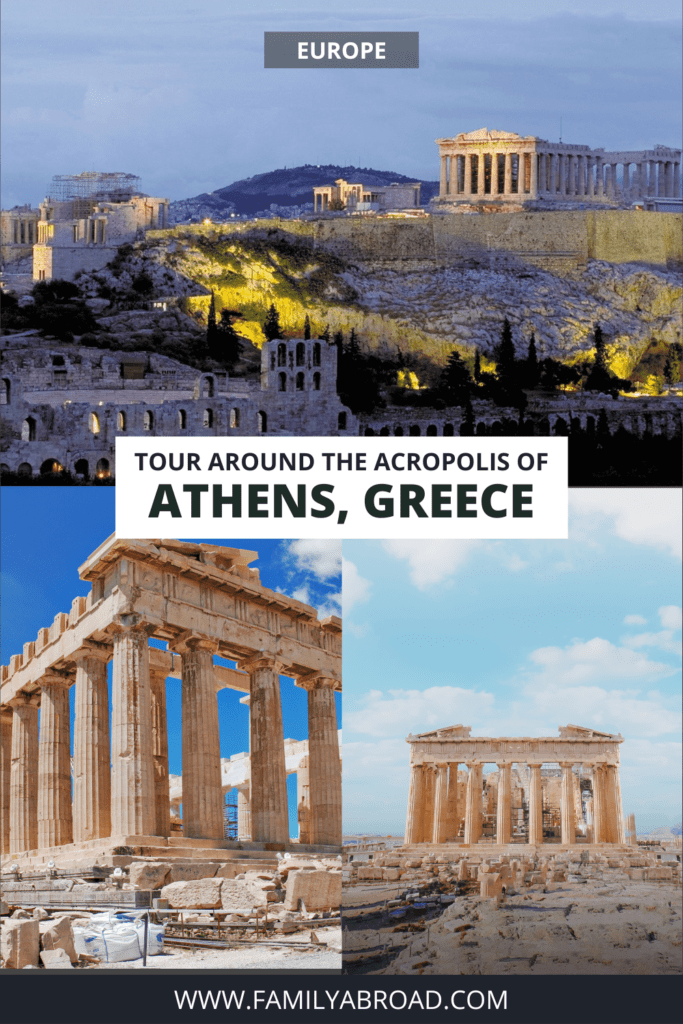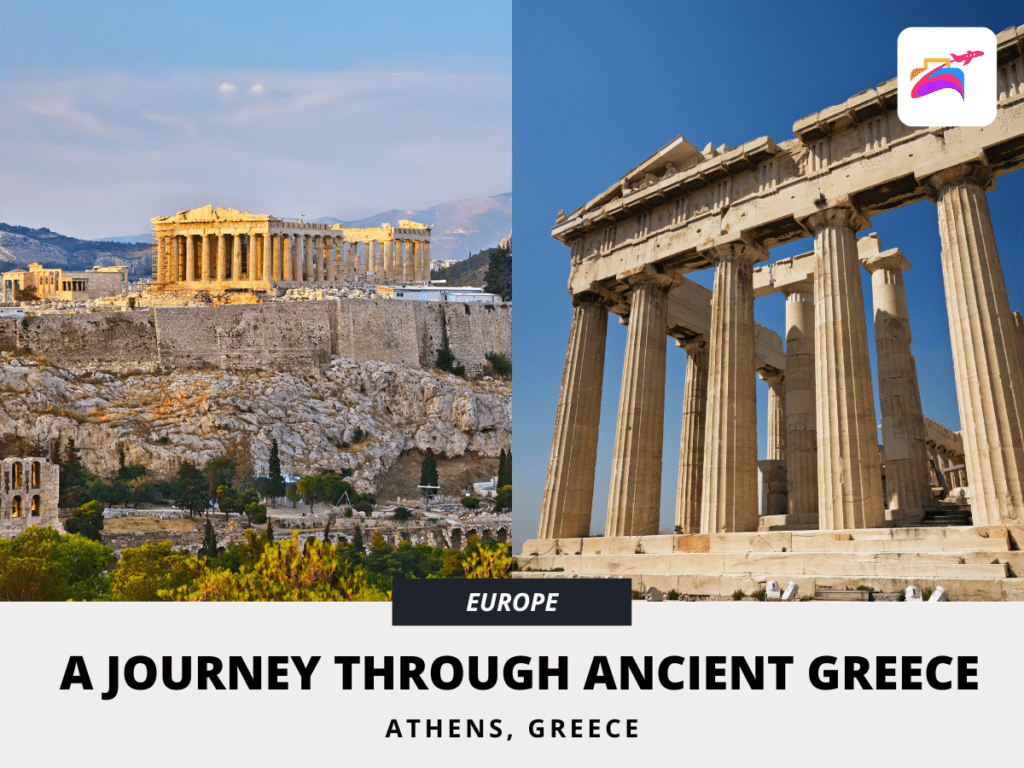Join us on an epic journey through the heart of ancient Athens as we explore the iconic Acropolis! From the towering Parthenon to its ancient temples, we’ll take you on an exciting adventure through some of the most iconic landmarks in the city.
With stunning views, fascinating history, and plenty of local culture, this blog post is the perfect way to experience the wonders of the Acropolis and immerse yourself in the rich history of Greece. So come along for the ride and discover the secrets of this ancient city with us!
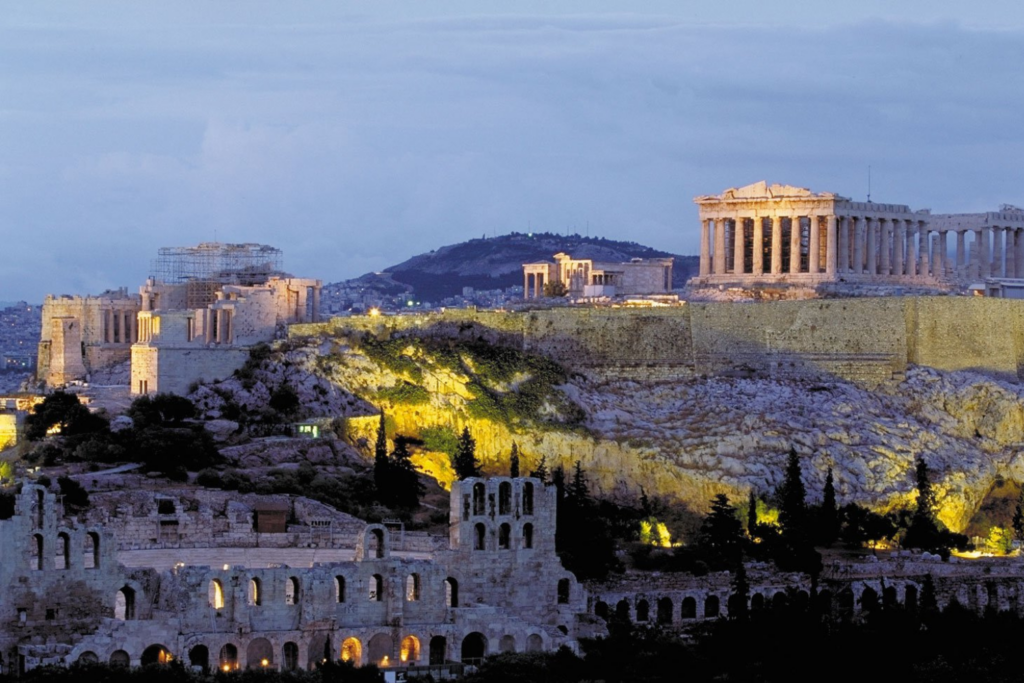
Overview and Brief History of Athens
Athens is a bustling city in Greece that offers a rich history, diverse culture, and breathtaking views. It’s a destination that has something to offer for everyone, from families looking for adventure to history buffs seeking to delve deeper into ancient civilization.
The city of Athens has a long and fascinating history that dates back to the 5th century BC. It was a center of learning, philosophy, and culture during the classical period and is known as the birthplace of democracy. Athens was also home to some of the most famous philosophers and thinkers of ancient times, such as Socrates, Plato, and Aristotle.
Over the centuries, Athens has been ruled by various empires, including the Roman, Byzantine, and Ottoman empires. Each of these periods has left its mark on the city, and visitors can see evidence of these influences in the city’s architecture, art, and culture.
Today, Athens is a modern and vibrant city that continues to attract visitors from all over the world. Its ancient ruins, such as the Acropolis and the Temple of Olympian Zeus, are major tourist attractions, while its bustling neighborhoods, like Monastiraki and Plaka, offer plenty of opportunities for shopping and dining. Whether you’re looking for history, culture, or adventure, Athens is a city that should be on your travel bucket list.
When my family and visited Athens during our two-month long trip around Greece, we knew we were in for a treat. We were excited to explore all that the city had to offer, from the Acropolis to all the ancient temples and ruins.
The Acropolis
Our first stop in Athens was the Acropolis, one of the most famous landmarks in the city as well as one of the most important archaeological sites in the world. Located in the center of Athens, Greece, the Acropolis is a hill that rises above the city and is visible from miles away. The word “Acropolis” comes from the Greek words “akros” (meaning “highest” or “upper”) and “polis” (meaning “city”), so it literally means “highest point of the city.”
As we made our way up the steep hill, we were amazed by the stunning views of the city below and we stopped to take plenty of photos along the way.
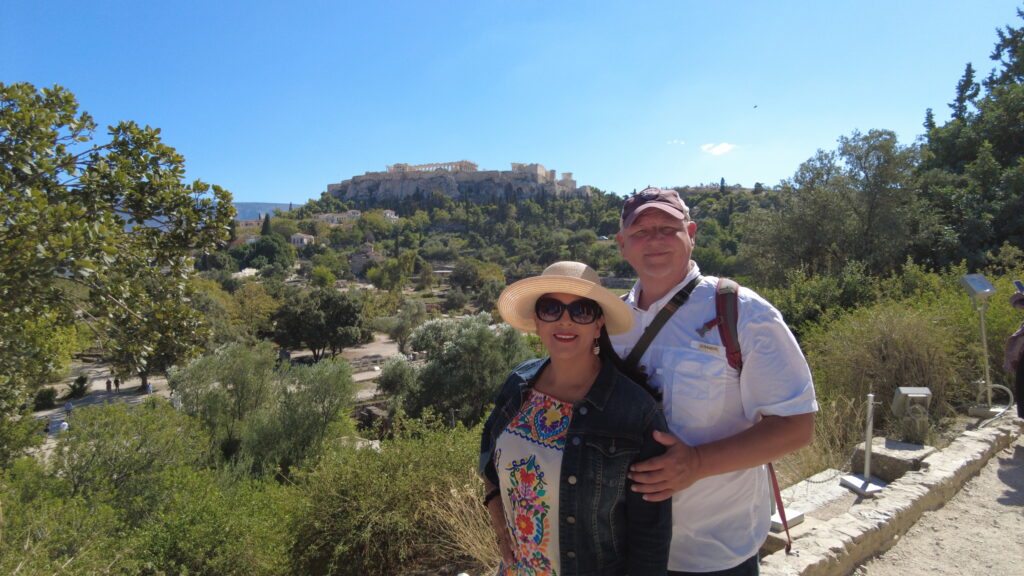 Don and Edith in Athens, with the Acropolis in the background
Don and Edith in Athens, with the Acropolis in the background
The Acropolis is home to several ancient monuments, the most famous of which is the Parthenon. Other than that, it is home to other important structures such as the Propylaea (a monumental gateway), the Erechtheion (a temple dedicated to several gods), and the Temple of Athena Nike (a small temple dedicated to the goddess of victory).
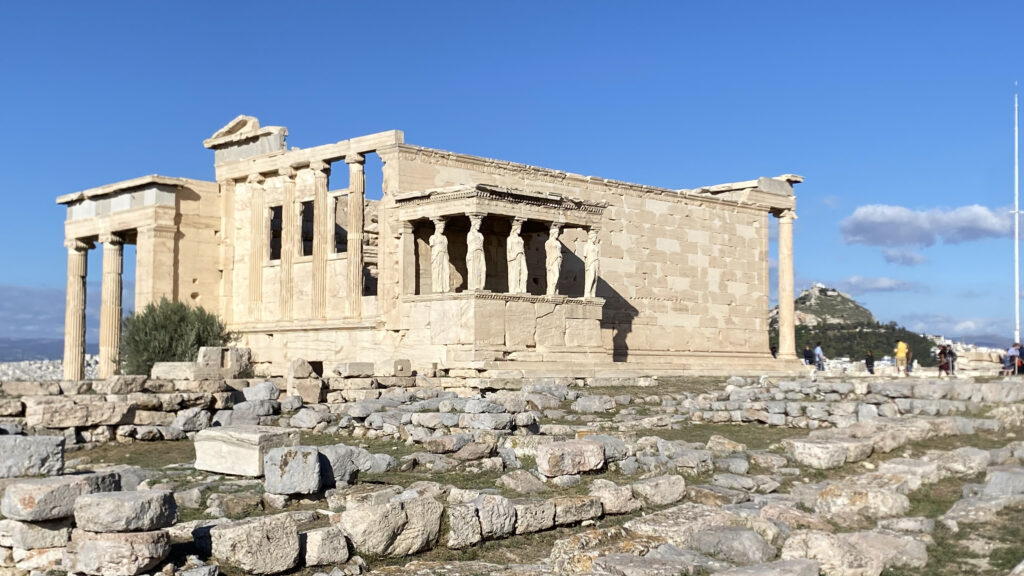 Ruins of the Acropolis of Athens
Ruins of the Acropolis of Athens
The Acropolis has a long and rich history that dates back to ancient times. It was first inhabited in the Neolithic period, and by the 5th century BCE, it had become the center of religious and cultural life in Athens.
Over the centuries, the Acropolis has been damaged by earthquakes, wars, and other natural disasters, but it has also been restored and preserved by archaeologists and historians. Today, it is one of the most popular tourist attractions in Greece, drawing millions of visitors every year.
 The McClure’s in front of ruins of the Acropolis
The McClure’s in front of ruins of the Acropolis
Visitors to the Acropolis can explore the ancient ruins, learn about the history and culture of ancient Athens, and enjoy stunning views of the city and the surrounding countryside. The site is also home to a museum that showcases artifacts and artwork from the Acropolis and other ancient Greek sites.
The Parthenon
After wandering the Acropolis for a bit, we explored the Parthenon, a famous ancient temple. It was built in the 5th century BCE and is considered one of the greatest architectural achievements of all time.
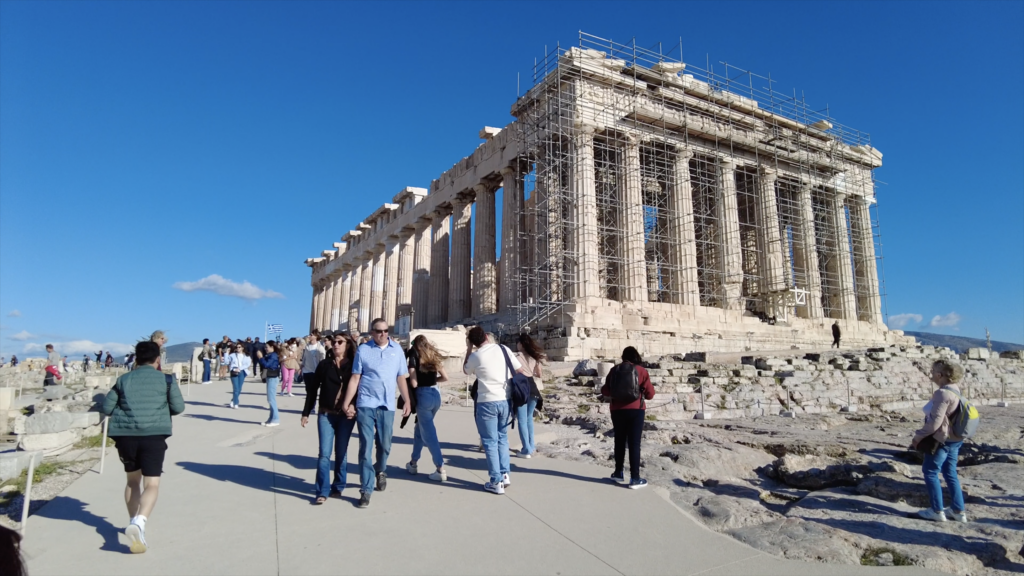 Walking to the Parthenon
Walking to the Parthenon
It was a breathtaking sight to see the massive columns and intricate carvings up close. We learned about the temple’s rich history and the important role it played in ancient Greek society.
It most important buildings in ancient Greek society for several reasons. Firstly, it was a religious temple dedicated to the goddess Athena, who was the patron deity of Athens. Secondly, it was a center for civic life in Athens. It served as a place where Athenians gathered to discuss and debate important political and cultural issues, and it was also the site of important public ceremonies and festivals. And lastly, the Parthenon was a masterpiece of artistic and architectural achievement that continues to inspire awe and wonder to this day.
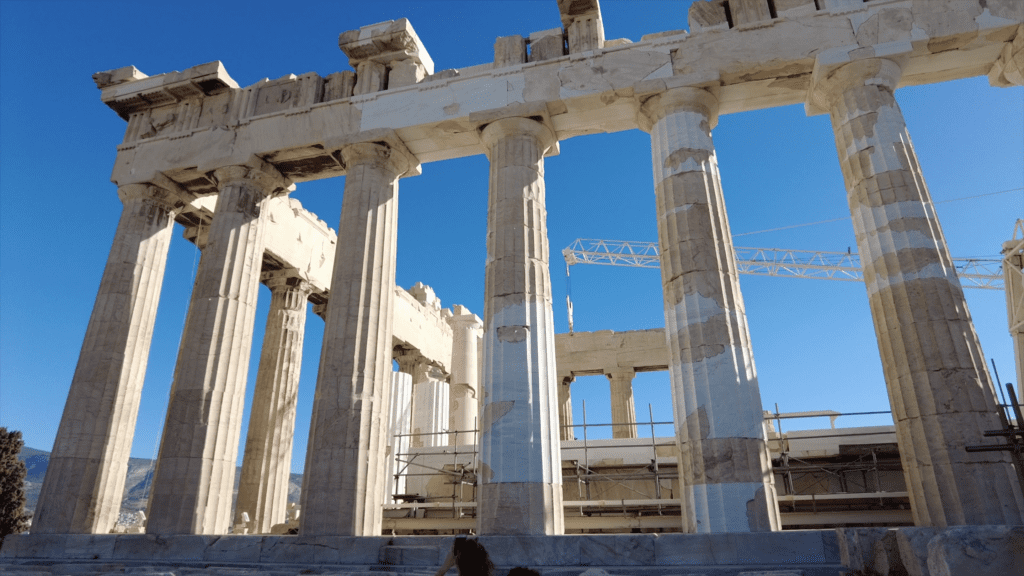 The Parthenon of Athens up close
The Parthenon of Athens up close
Over the centuries, the Parthenon has been damaged by earthquakes, invasions, and other natural disasters. In the 17th century, it was converted into a mosque by the Ottoman Empire, and during the Greek War of Independence in the 19th century, it was used as a munitions depot by the Ottomans, which resulted in a catastrophic explosion.
Despite its tumultuous history, the Parthenon has been restored and preserved over the years, and it remains one of the most important cultural and historical sites in the world.
Visitors to the Parthenon can explore the temple’s ruins, admire its intricate architectural details, and learn about the history and mythology of ancient Athens. The site also offers breathtaking views of the city of Athens and the surrounding countryside.
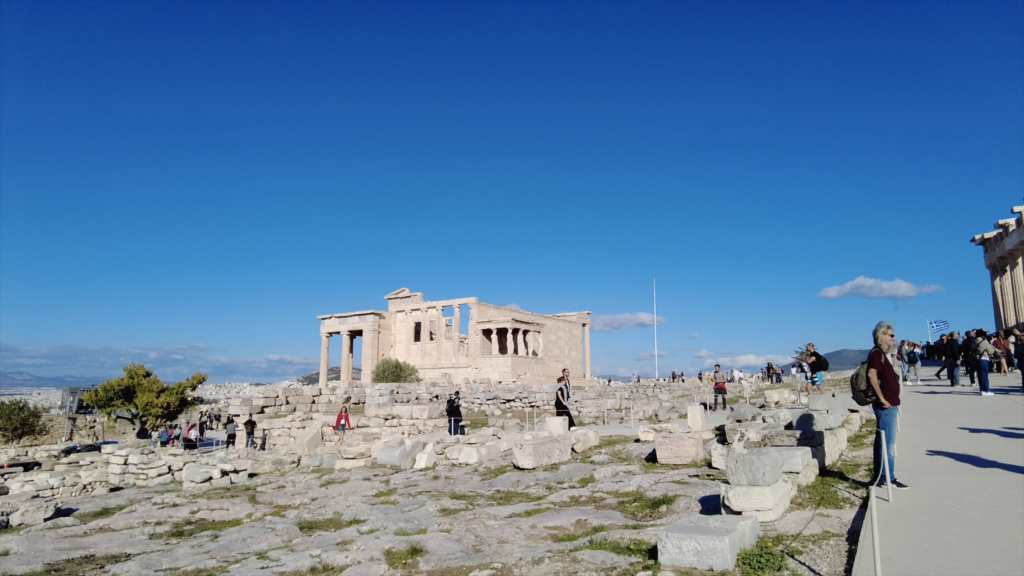 The surrounding ruins of the Parthenon
The surrounding ruins of the Parthenon
Monastiraki
After exploring the Acropolis, we made our way down to Monastiraki. It is one of the oldest neighborhoods in the city and is known for its bustling markets, narrow streets, and historical landmarks.
Monastiraki is a lively and colorful neighborhood that captures the spirit of Athens. It’s a great place to pick up souvenirs and gifts and browse through local shops.
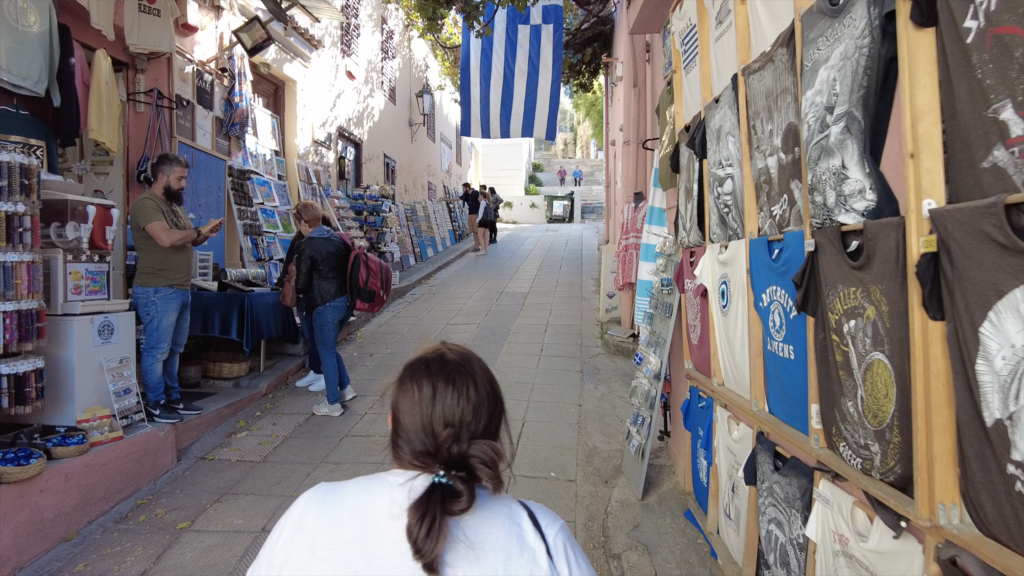 Walking through the streets of Monastiraki
Walking through the streets of Monastiraki
The area also has several historical sites, including the Roman Agora, an ancient marketplace, and the Hadrian’s Library, a famous library and cultural center built in the 2nd century CE.
One shop we visited was called Hans & Gretel, which is a candy shop. As soon as we stepped inside, we were transported into a world of sweet colorful treats.
 The exterior of the candy shop, Hans and Gretel
The exterior of the candy shop, Hans and Gretel
The shop was filled with colorful candies, chocolates, and other sweet treats, all arranged in eye-catching displays that were almost too pretty to eat. It’s the perfect place to satisfy any sweet tooth craving.
 Inside the Hans & Gretel candy shop
Inside the Hans & Gretel candy shop
Roman Agora
We also visited the Roman Agora, an ancient marketplace that dates back to the Roman period. It was built in the 1st century CE during the Roman period and was a commercial center for the city for many centuries.
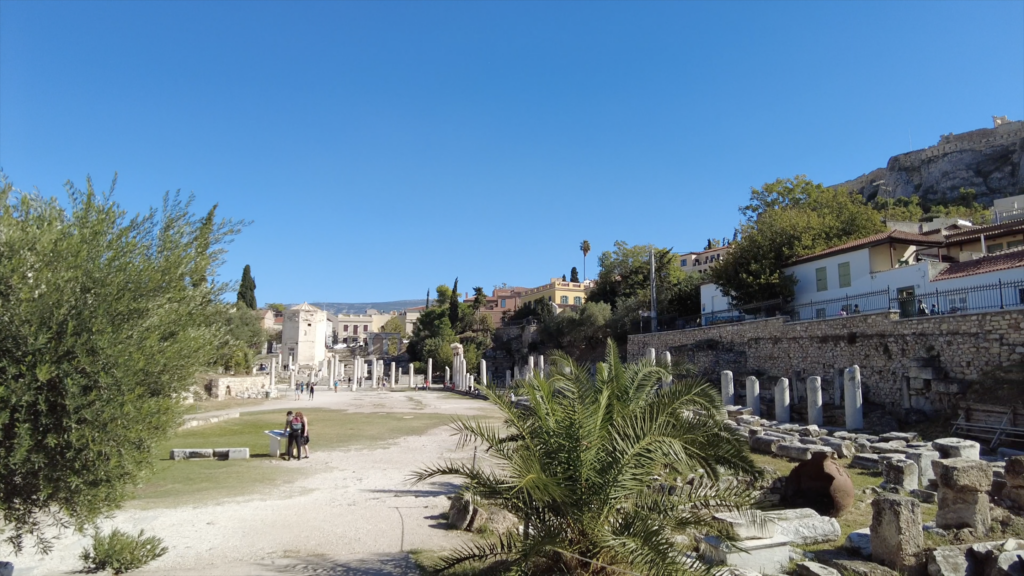 The Roman Agora, Athens
The Roman Agora, Athens
The Roman Agora was constructed on the site of an earlier Greek marketplace, the Agora of Athens. It was designed to be a smaller and more organized version of the original Agora and featured a large courtyard surrounded by shops and public buildings.
As time passed, the Roman Agora fell into disuse and was largely forgotten. In the 19th century, archaeologists began excavating the site and uncovered many of its ancient structures and artifacts.
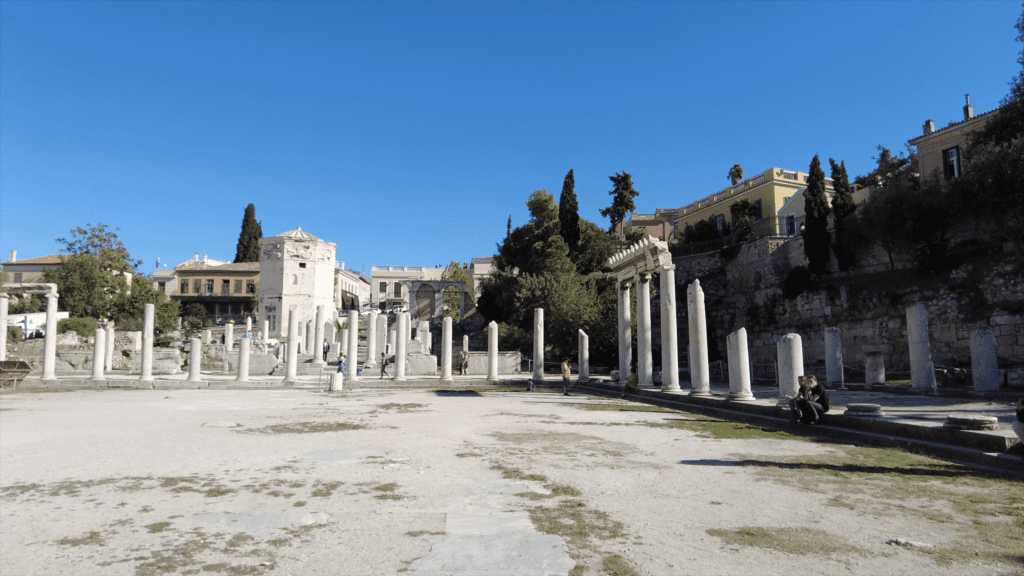 The Roman Agora, Athens
The Roman Agora, Athens
Today, visitors can explore the ruins of the Roman Agora and learn about the daily life and commerce of ancient Athens.
Temple of Hephaestus
The Temple of Hephaestus is another ancient temple that we visited, and it’s one of the best-preserved temples in Athens.
 The Temple of Hephaestus, Athens
The Temple of Hephaestus, Athens
It was built in the 5th century BC and was dedicated to the god Hephaestus, the god of metalworking and craftsmanship, and was also used as a place of worship for Athena.
The Temple of Hephaestus is renowned for its intricate carvings and sculptural decorations. The temple also features a large statue of Athena and a number of other smaller statues and reliefs.
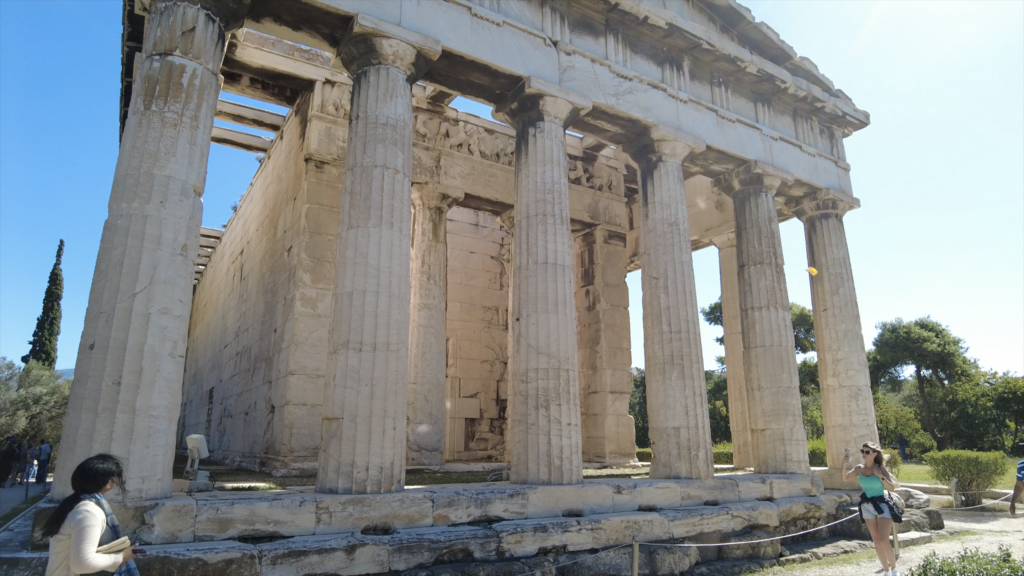 The Temple of Hephaestus
The Temple of Hephaestus
Throughout its history, the Temple of Hephaestus has been used for a variety of purposes, including as a church, a mosque, and a museum. It has also undergone extensive renovations and restorations to preserve its historic architecture and cultural significance.
Ancient Agora
We also visited the Ancient Agora, which was the heart of ancient Athens. It was a public square that was used for political, commercial, and social activities, and it is home to several important temples and buildings. It was amazing to see the ancient ruins and learn about the history of the area.
 The Ancient Agora of Athens
The Ancient Agora of Athens
Hadrian’s Library
Our final stop was Hadrian’s Library, an ancient Roman library that was built in the 2nd century AD by the Roman emperor Hadrian. Hadrian’s Library was renowned for its impressive architecture and design.
 Hadrian’s Library, Athens
Hadrian’s Library, Athens
The building served as a cultural center for the city for many centuries and housed a collection of books, manuscripts, and scrolls. It also served as a center for philosophical and scholarly debate.
Today, visitors can explore the ruins of Hadrian’s Library and learn about the important role it played in the cultural and intellectual life of ancient Athens.
Conclusion
We were grateful for the opportunity to explore this incredible site together as a family and to learn more about the rich history of ancient Greece.
It was incredibly humbling to see all these incredible cultural treasures that have stood the test of time. We left feeling inspired by the incredible achievements of the ancient Greeks and we realized just how important it is to protect and preserve these sites for future generations to enjoy.
If you ever have the chance to visit Athens, we highly recommend spending a day exploring the Acropolis – it truly is an experience of a lifetime.
WATCH THE FULL VIDEO HERE
Like this post? Pin it on Pinterest!
